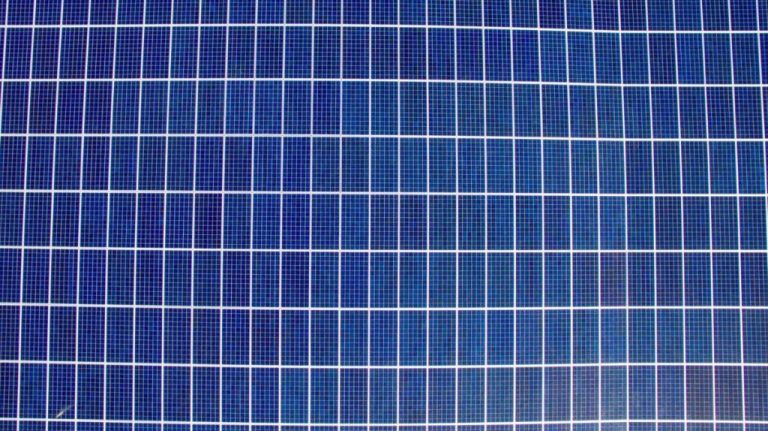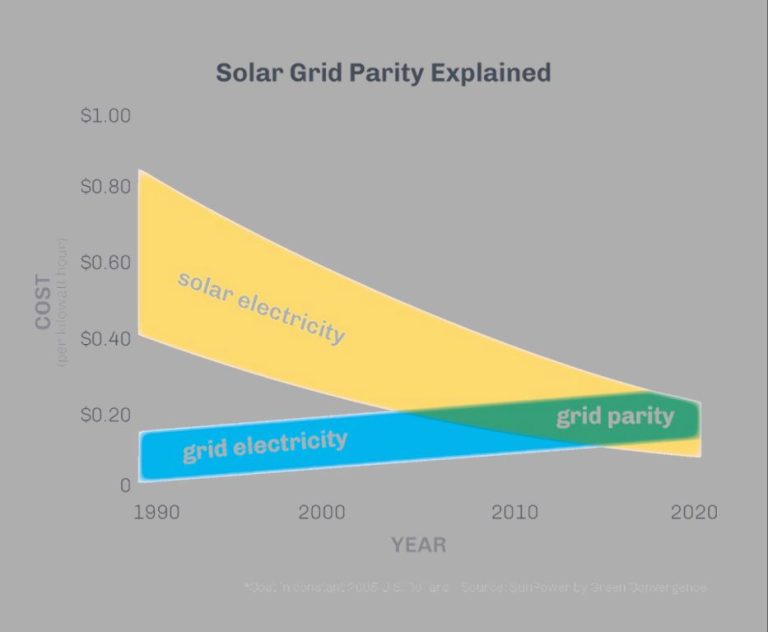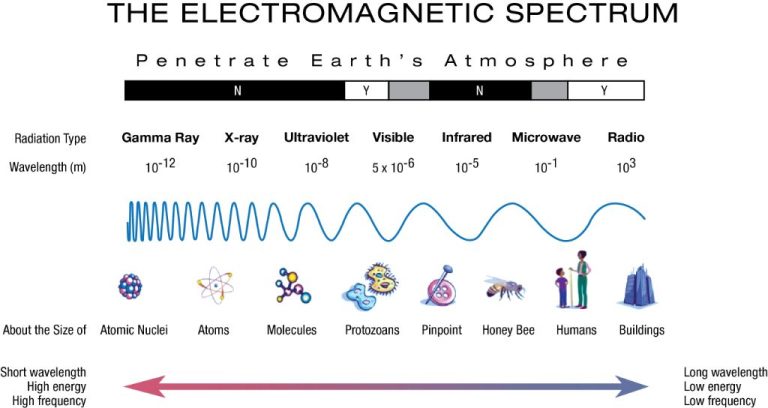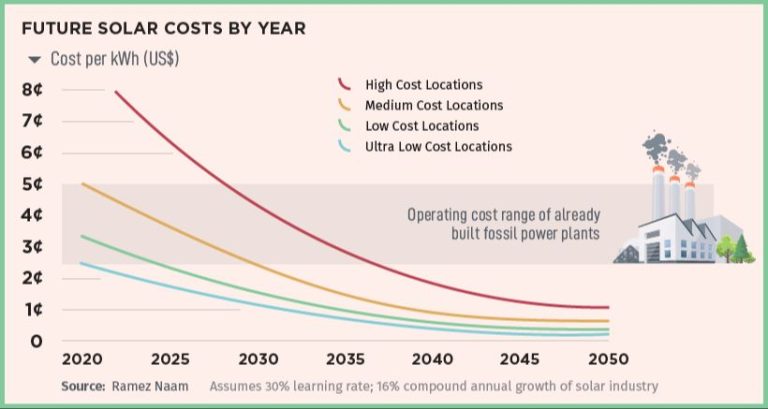Which Renewable Energy Source Is Considered Endless?
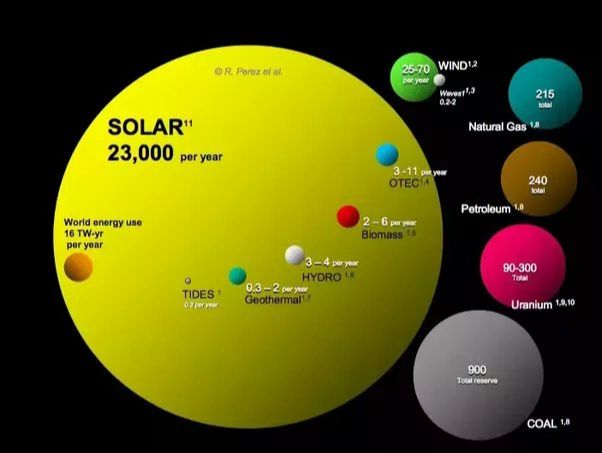
Renewable energy refers to energy sources that are naturally replenishing and virtually inexhaustible, like sunlight, wind, water, and heat from inside the earth. According to the U.S. Energy Information Administration, “renewable energy is generally defined as energy that is supplied by natural resources that are naturally replenished within a human timescale.”
The key question examined in this article is: Which renewable energy source is considered endless?
To answer this question, we will look at the following major renewable energy sources: solar, wind, hydroelectric, geothermal, bioenergy, tidal, and wave power. We will compare the strengths and limitations of each renewable energy type to determine which one is truly endless and discuss the implications.
Solar
Solar energy works by converting sunlight into electricity using photovoltaic cells or absorbing sunlight to heat water or air using solar thermal collectors (Source). Photovoltaics, often referred to as solar PV, are made from materials like silicon that release electrons when they absorb photons from sunlight. The electrons flow into circuits, generating direct current (DC) electricity (Source). Solar PV panels are modular structures containing many PV cells that can be installed on rooftops or ground-mounted arrays. Concentrated solar power (CSP) systems use mirrors to focus sunlight on a central thermal receiver, heating up a fluid that drives a turbine to create electricity.
Solar thermal systems, also known as solar hot water, use panels with pipes filled with fluid or tubes containing water that heat up when exposed to sunlight. The thermal energy can be used directly to provide hot water or space heating in homes and businesses. Solar thermal is considered a renewable energy source because the sunlight is replenished daily. The amount of solar energy that can be utilized depends on the climate and weather where the solar systems are located.
Wind
Wind energy comes from air flow over the earth’s surface. This air flow is caused by the sun unevenly heating the atmosphere, the rotation of the earth, and the earth’s surface irregularities. Wind turbines convert the kinetic energy of wind into mechanical power through their blades. Then a generator converts this mechanical power into electricity (U.S. Department of Energy, 2022).
Most wind turbines have a horizontal axis with two or three blades that face into the wind. Larger wind turbines typically have more wind-exposed surface area and generate more electricity. Groups of wind turbines in the same location are called wind farms or wind power plants. Many of the world’s wind farms consist of hundreds of individual wind turbines spread out over large areas.
Wind power plants can be built on land or off shore in bodies of water. Onshore wind is the most common today, while offshore wind is a fast growing sector with significant potential, especially in areas near coastal load centers (U.S. Department of Energy, 2022).
The main advantages of wind power are that it’s a renewable and clean source of energy. It also produces no greenhouse gas emissions during operation. Some of the challenges include intermittent generation, land use conflicts, and impacts on wildlife. But technological advances are helping to make wind power more reliable and efficient.
Hydroelectric
Hydroelectric power comes from the kinetic energy in flowing water that turns turbines to generate electricity. Large hydroelectric plants utilize dams to store water in reservoirs, controlling the flow to the turbines. According to the Energy Information Administration (EIA), hydroelectric plants account for over 6% of total electricity generation in the United States.
At a hydroelectric dam, the water from the reservoir flows through intake gates that funnel the water into pipes or penstocks. The fast-flowing water pushes against turbine blades, making them spin. The turbine is connected to a generator that converts the mechanical energy into electrical energy. The power is then fed into transformers and transmission lines to distribute the electricity. Hydroelectric power plants range in size from large dams producing over 4,000 megawatts to small run-of-river plants generating only a few kilowatts.
Run-of-river hydro plants utilize the natural flow of rivers to generate electricity without dams. According to the Department of Energy (DOE), these systems do not require stored water or reservoirs. The flowing river spins the turbine blades directly. Run-of-river projects have less environmental impact than large dam installations.
Geothermal
Geothermal energy comes from the heat within the earth. It is considered a renewable energy source because the heat emanating from the interior of the Earth is essentially limitless. The heat continuously flows to the surface and replenishes the thermal energy available for generation of geothermal power.
Geothermal power plants utilize underground reservoirs of hot water to produce electricity. The hot water or steam from geothermal reservoirs is piped up to the surface to turn turbines and generate electricity. There are three types of geothermal power plants:
- Dry steam plants that tap underground sources of steam directly
- Flash plants that pull deep, high-pressure hot water into cooler, low-pressure water. The rapid expansion of water into steam then drives the turbines
- Binary cycle plants that pass moderately hot geothermal water through heat exchangers to heat a secondary fluid with a much lower boiling point that vaporizes to drive turbines
Enhanced geothermal systems (EGS) are engineered reservoirs created to produce energy from geothermal resources that are otherwise not economical due to lack of water and/or permeability. EGS expands the potential use of geothermal energy beyond conventional hydrothermal resources. EGS involves injecting cold water into hot dry rock at depth, circulating fluid through the network of fractures to extract heat, and bringing the hot water to the surface to generate electricity.
According to the U.S. Department of Energy, the geothermal resource base underneath the United States is enormous and could potentially generate up to 100 times more power than the nation’s current electric capacity. However, only a fraction of the geothermal resource base has been identified and even less has been developed commercially.[1]
Bioenergy
Bioenergy is renewable energy produced from organic matter called biomass, such as plants and plant-derived materials. Biomass contains stored energy from the sun. When biomass is burned, the chemical energy is released as heat and can be used to generate electricity with a steam turbine. Bioenergy can also be converted into liquid fuels called biofuels that can replace gasoline, diesel and jet fuel.
Common biomass sources used for bioenergy include wood, energy crops like switchgrass, agricultural residues like corn stalks, and organic waste materials. Using biomass from plants and waste is a renewable and sustainable way to produce energy. Bioenergy technologies like anaerobic digestion can convert organic waste into biogas for heat, electricity or transportation fuel. Biofuels made from energy crops and agricultural residues are renewable alternatives to fossil fuels.
Key bioenergy technologies include direct combustion, co-firing with coal, anaerobic digestion to biogas, and production of liquid biofuels like ethanol and biodiesel. Bioenergy is considered carbon-neutral because the carbon released is recycled through growing new plants and crops. Bioenergy production supports energy independence, economic growth, and environmental goals.
(Sources: https://www.energy.gov/eere/bioenergy/bioenergy-basics, https://www.energy.gov/eere/articles/bioenergy-renewable-sustainable-attainable)
Tidal Energy
Tidal energy utilizes the natural rise and fall of ocean tides and currents to generate renewable electricity. Tidal energy projects involve constructing tidal stream generators or tidal barrages.
Tidal stream generators work similarly to wind turbines, except they are underwater and capture the energy from tidal currents to turn the turbine blades. The spinning blades power a generator that converts the kinetic energy into electricity.[1] Tidal stream generators can be installed individually or in large farms in areas with consistently high tidal currents.
Tidal barrages are essentially dams built across tidal inlets or estuaries that capture the potential energy from the height difference between high and low tides. When the tide is low, the dam gates are closed, allowing the water to rise up on one side. At high tide, the dam gates are opened and the water flows through turbines embedded in the barrage to generate electricity before exiting out the other side.[2] Tidal barrages require specific geographic conditions to work effectively.
Overall, tidal energy is considered a renewable and predictable energy source, as the tides are endless. However, tidal projects can be very location specific and costly to construct.
Wave
Wave energy refers to capturing the kinetic energy from ocean surface waves and converting it into electricity. Wave energy converters, such as oscillating water columns, floating buoys, and various types of turbines, are used to harness this energy. According to IRENA, waves cause these floating or submerged converters to move up and down. This motion is used to drive electromechanical or hydraulic energy converters to generate electricity. The size and flow of the waves impact the amount of energy that can be captured.
Wave energy has the potential to provide a significant amount of renewable electricity around the world, especially near coastal areas which have more access to waves. However, technology to harness wave power efficiently is still developing. There are some pilot projects and test sites, but more advancement is needed for wave energy to reach its full potential.
Comparison
When comparing renewable energy sources like solar, wind, hydroelectric, geothermal, bioenergy, tidal, and wave power, there are several factors to consider including costs, capacity, and reliability (Sources of Energy: A Comparison).
In terms of costs, geothermal and hydroelectric power tend to have lower costs per kWh generated compared to other renewables like solar and wind, which require more upfront investment in infrastructure (U.S. Renewable Energy Factsheet). However, costs for solar and wind have decreased dramatically in recent years.
For capacity, hydroelectric and geothermal provide relatively consistent baseline power, while solar and wind vary based on weather conditions. Bioenergy capacity depends on sustainable sources of biomass feedstock. Wave and tidal are still emerging industries with relatively low current capacity (Comparison Between Sources of Renewable Energy).
Regarding reliability, geothermal and hydroelectric tend to be the most consistent, while solar and wind depend on adequate sunlight and wind patterns. Bioenergy reliability depends on consistent biomass supply chains. Wave and tidal reliability depends on access to suitable coastal areas or rivers (U.S. Renewable Energy Factsheet).
Overall, an optimal renewable energy mix combines sources like geothermal, hydroelectric, solar, and wind to balance out costs, capacity factors, and reliability (Sources of Energy: A Comparison). The growth of battery storage can also help address intermittency issues with solar and wind.
Conclusion
In summary, geothermal energy is considered an endless renewable energy source. Geothermal energy comes from the natural heat within the earth, which is a massive amount of thermal energy generated and stored beneath the earth’s surface. This geothermal energy originates from the original formation of the planet, from radioactive decay of minerals, and from volcanic activity. The geothermal energy from the earth’s core is essentially limitless. While geothermal sites can become depleted if the rate of fluid extraction is too high, the earth’s geothermal energy as a whole will persist for billions of years, making it an endless renewable energy source unlike solar, wind, hydroelectric, bioenergy, tidal, or wave energy.


